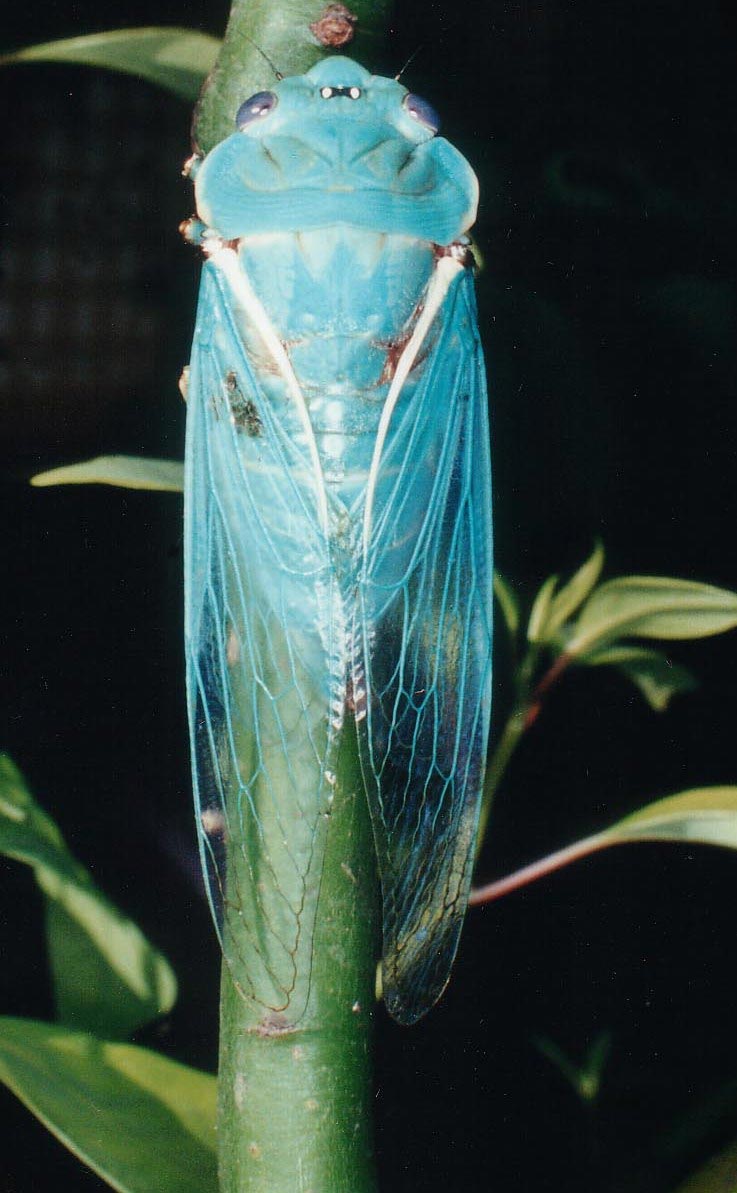A Green Grocer (Cyclochila australasiae (Donovan, 1805)) cicada toy.
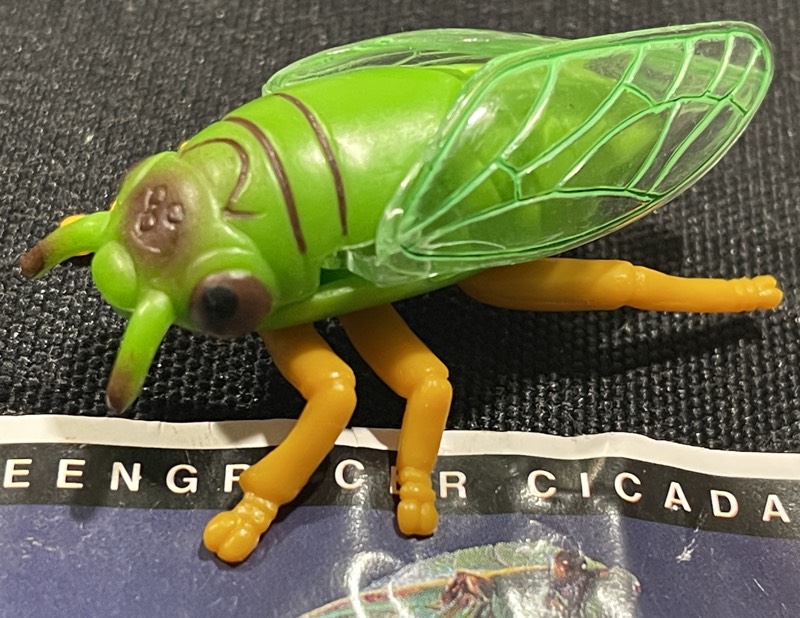
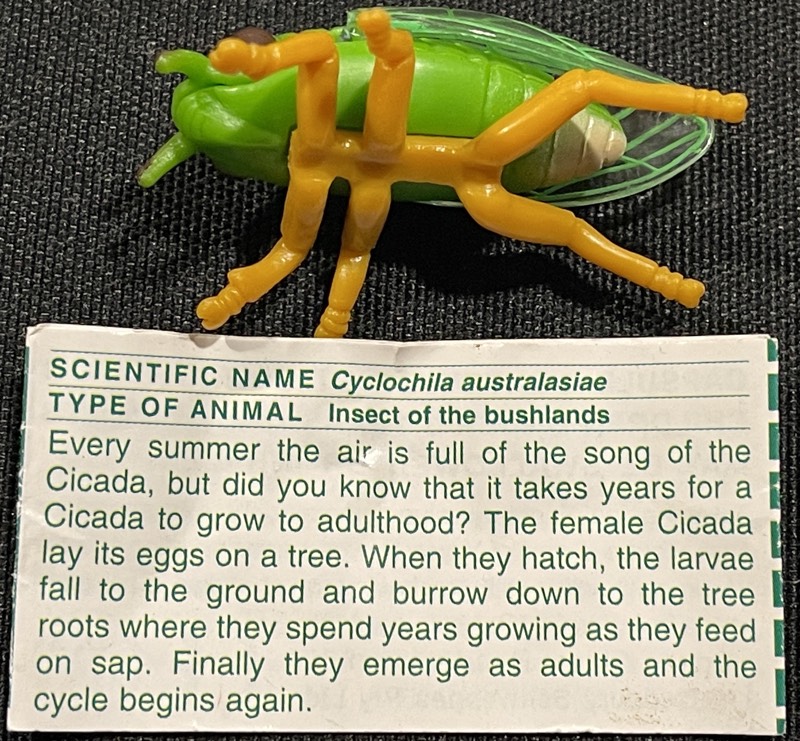
Green Grocers are found in eastern Australia.
A Green Grocer (Cyclochila australasiae (Donovan, 1805)) cicada toy.


Green Grocers are found in eastern Australia.
Looks like the post office of Australia has cicada themed stamps. As they say in the Pokemon world, “got to collect them all” (or something like that).
Update:
Here’s a photo of the actual stamps. I got them on eBay.
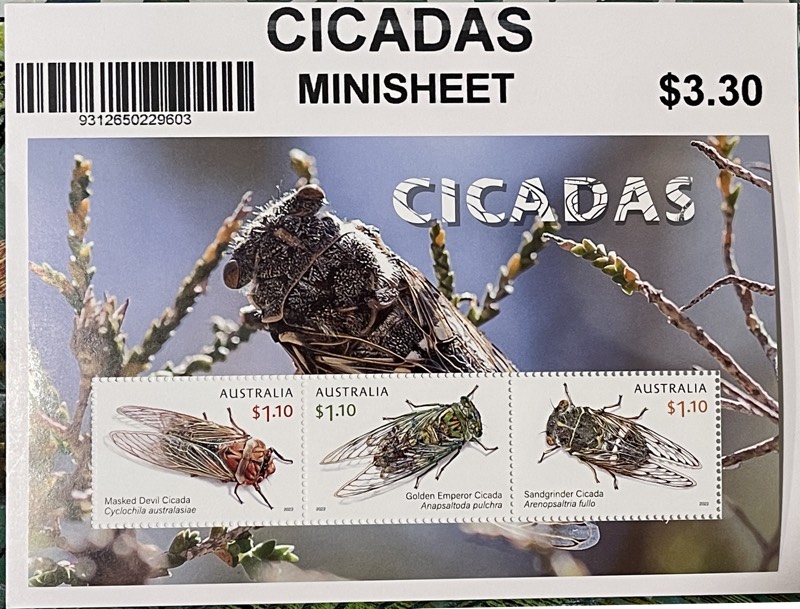
Masked Devil (Cyclochila australasiae) stamp:
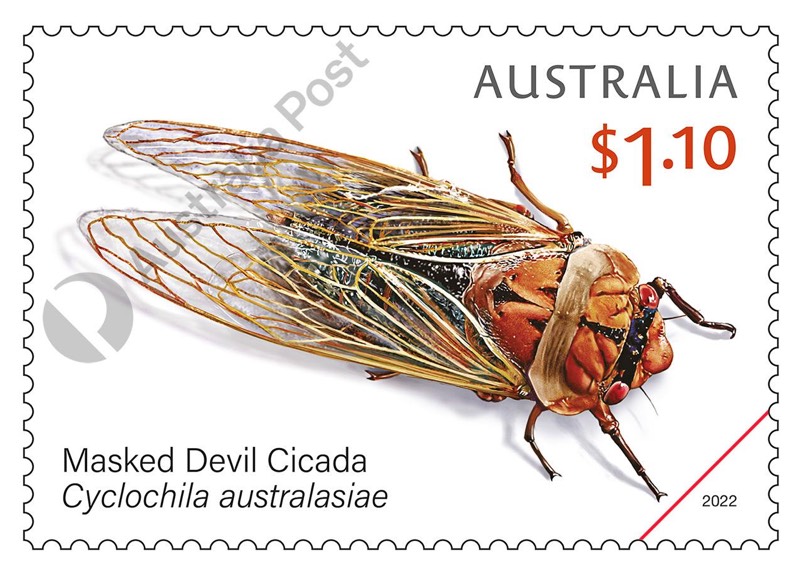
More about Masked Devil cicadas:
Golden Emperor (Anapsaltoda pulchra) stamp:
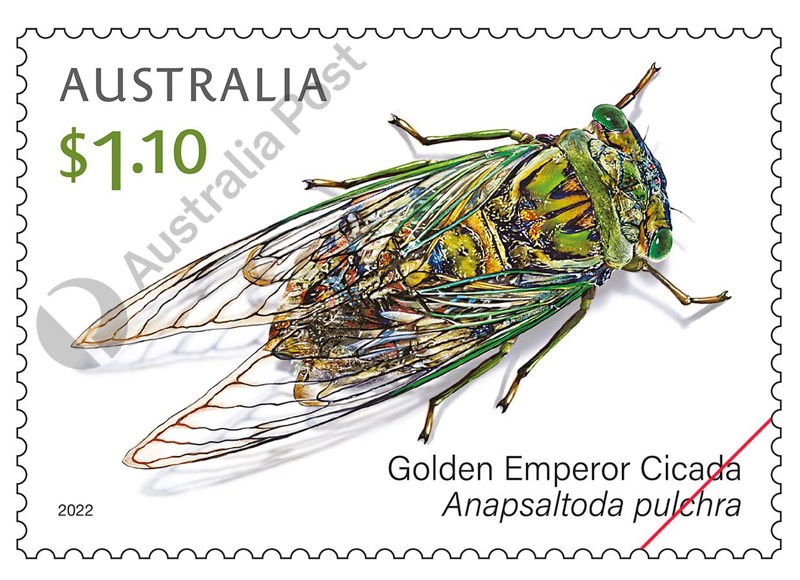
More about Golden Emperor cicadas:
Sandgrinder (Arenopsaltria fullo) stamp:
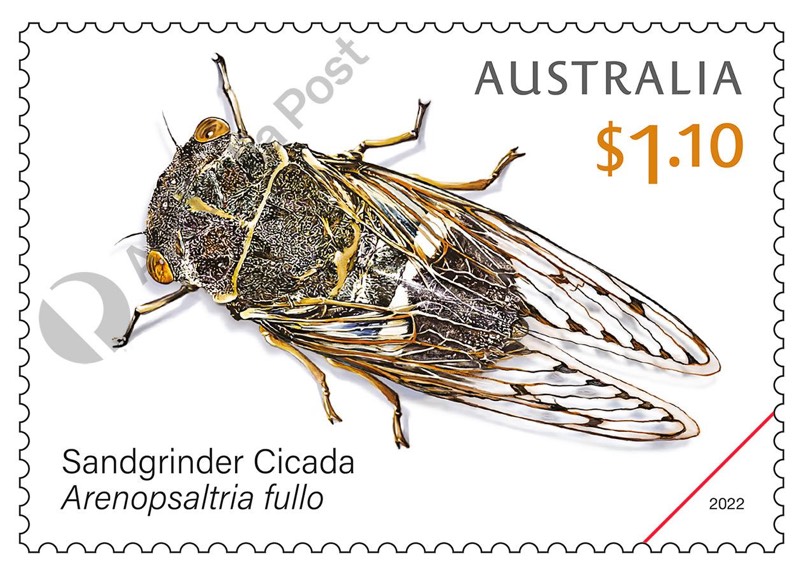
More Sandgrinder cicada action:
Green Grocer (Cyclochila australasiae) photos from Kees Green. Australia. 2013.
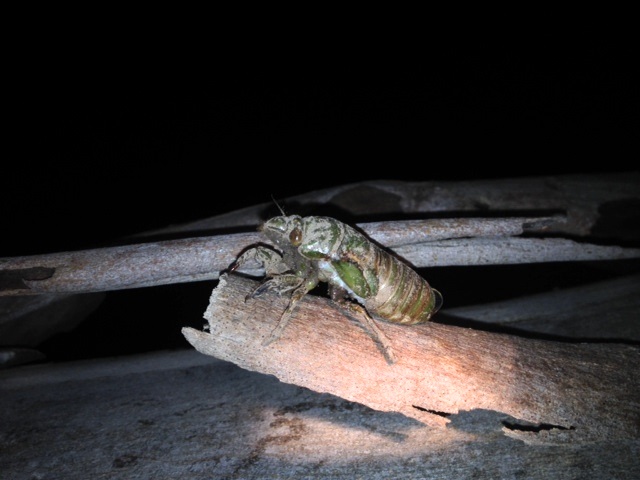
Green Grocer Cyclochila australasiae nymph by Kees Green
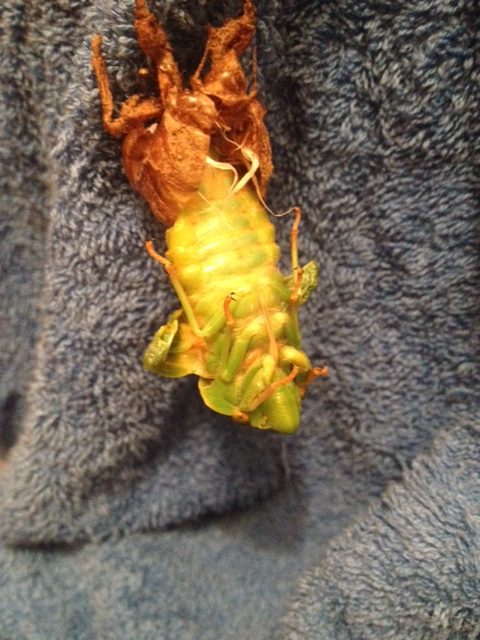
Green Grocer Cyclochila australasiae molting by Kees Green
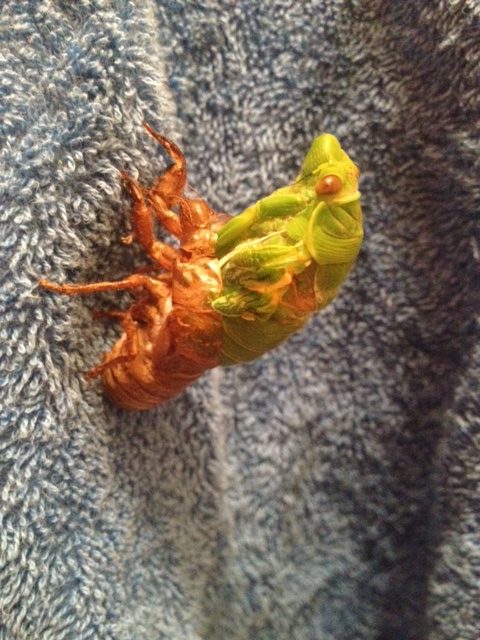
Green Grocer Cyclochila australasiae molting by Kees Green 02
Kevin Lee’s Green Grocer (Cyclochila australasiae) photos:
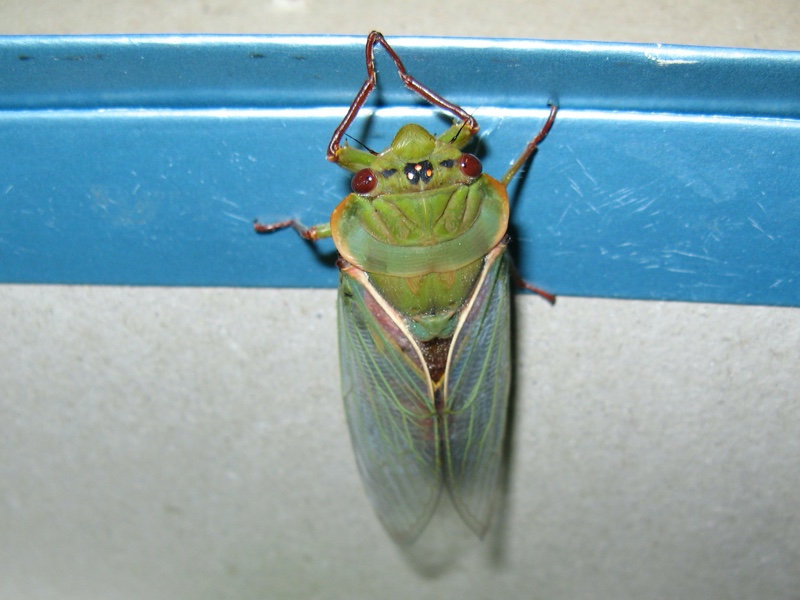
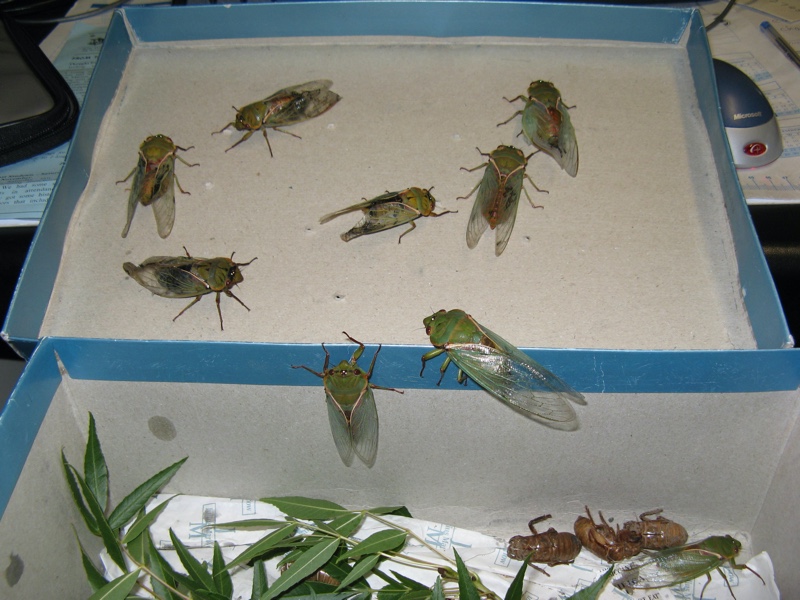
This one is somewhere between a Green Grocer and a Yellow Monday, I think. Check out the “mask” between the eyes:
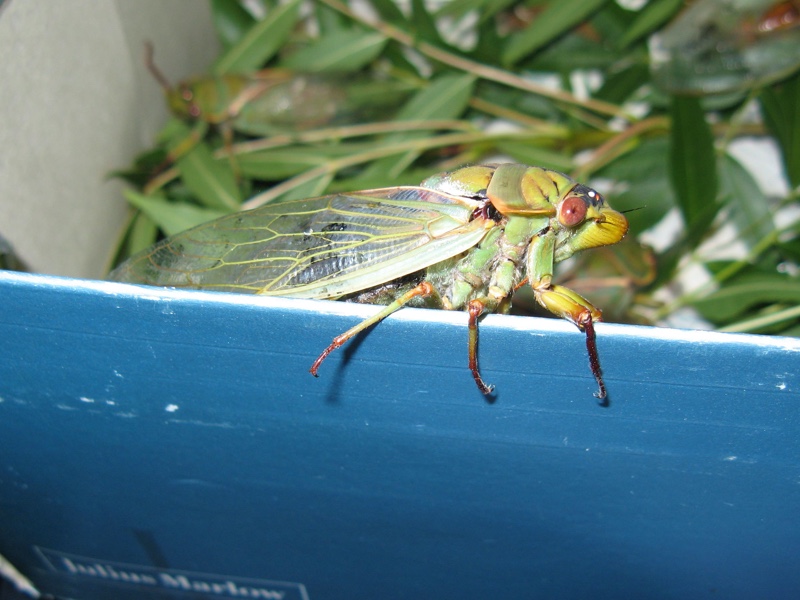
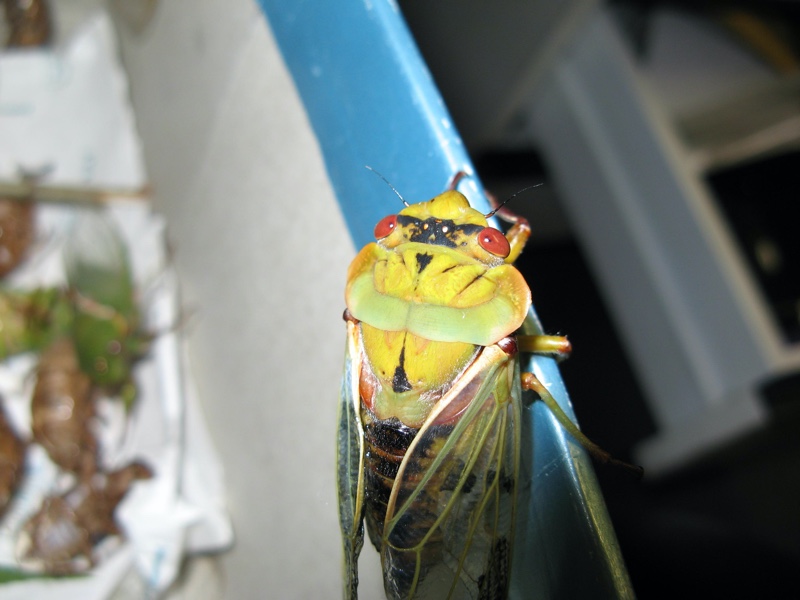
Yellow Monday (Cyclochila australasiae) photos by Tom Katzoulopolopoulous.
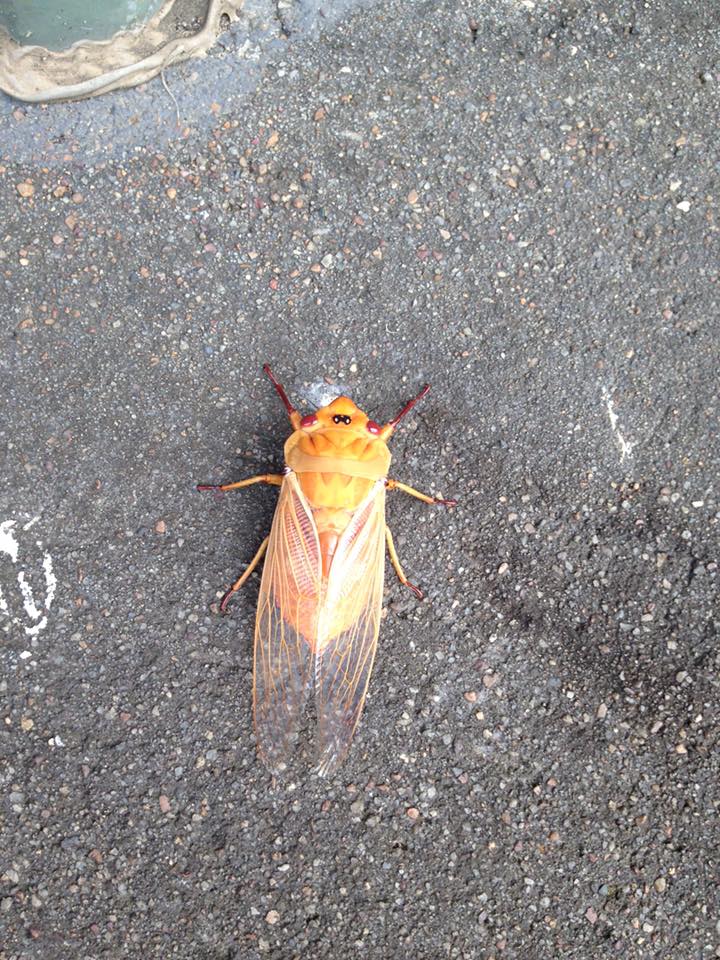
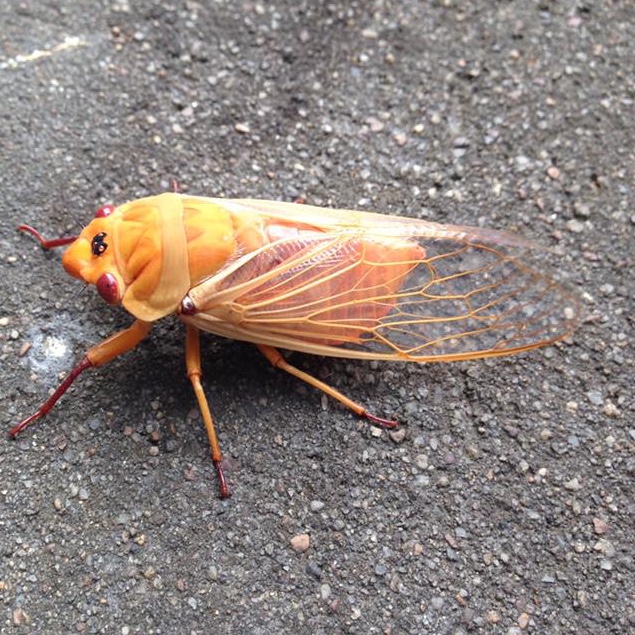
Green Grocer (Cyclochila australasiae) photo by Bron. Taken in Australia in 2007.
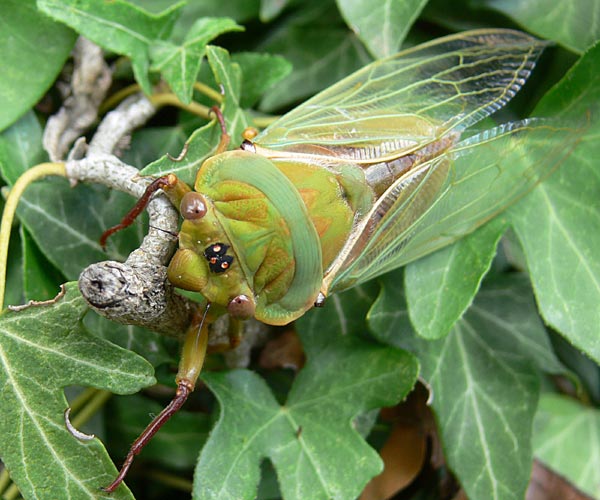
Cyclochila australasiae (Donovan, 1805) is found in Australia and is remarkable for its variety of color morph, including green (Green Grocers), yellow (Yellow Mondays), blue (Blue Moons), and orange (Masked Devils).
Scientific classification:
Family: Cicadidae
Subfamily: Cicadinae
Tribe: Cyclochilini
Genus: Cyclochila
Species: Cyclochila australasiae (Donovan, 1805)
A Green Grocer: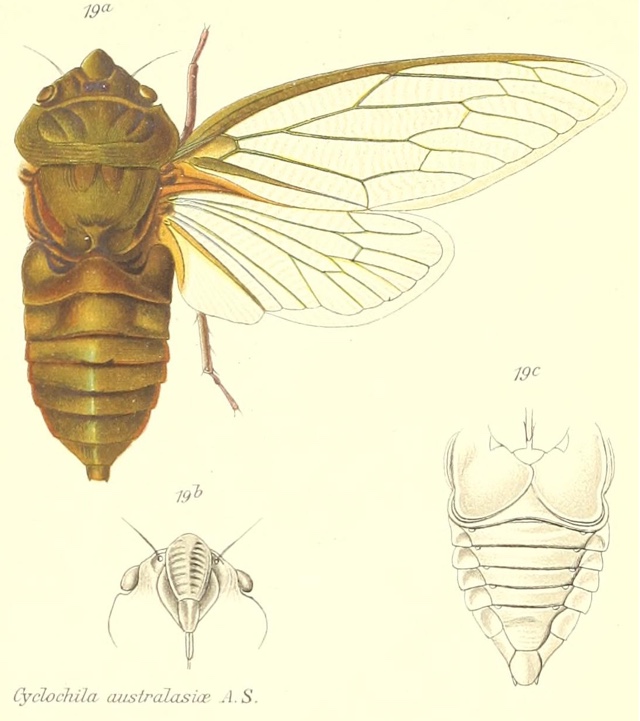

Green Grocer Photo by Kevin Lee.
A Green Grocer Specimen:
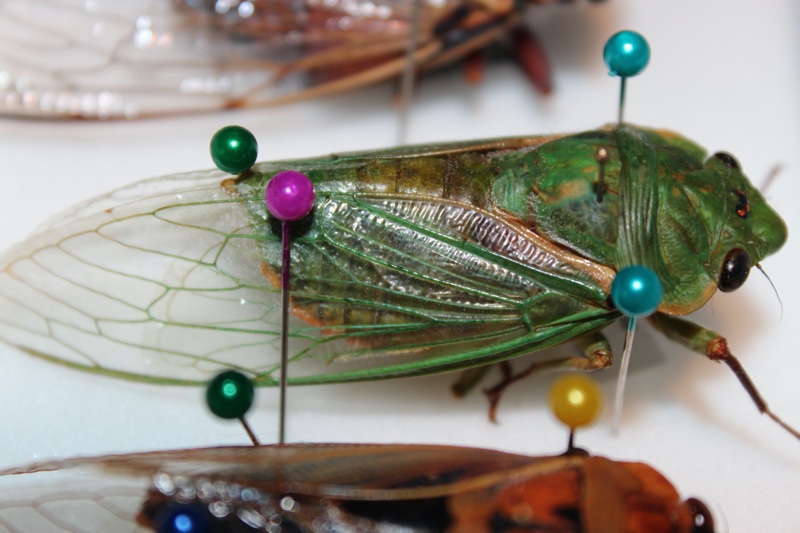
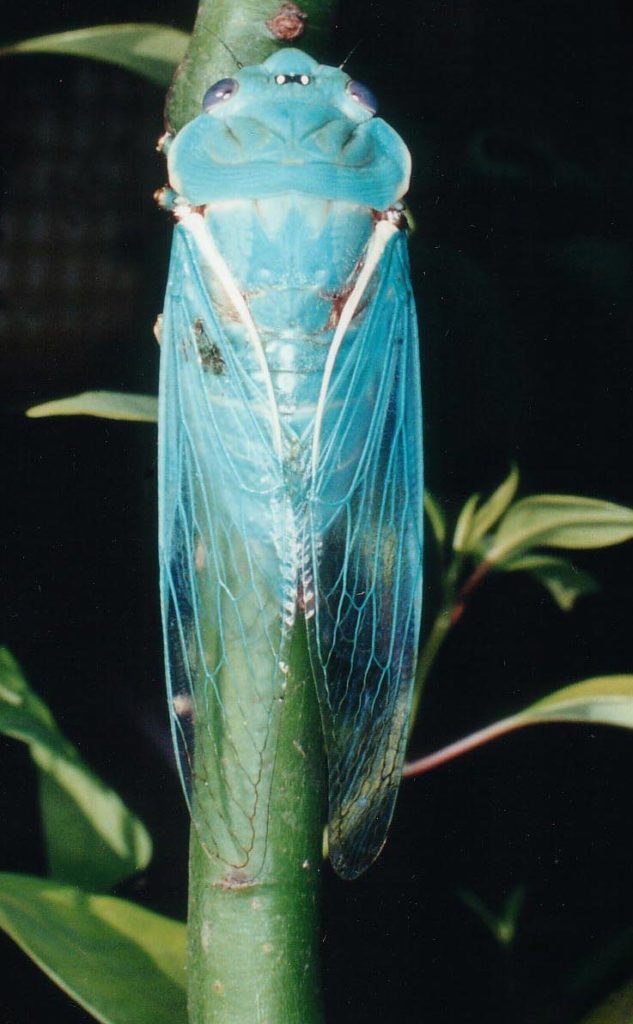
Rare Blue Moon variety. Photo by David Emery.
Cyclochila genus description by W. L. Distant:
Characters. — Head about long as breadth between eyes, including eyes distinctly narrower than pronotum but almost as wide as its anterior margin, ocelli close together near middle of vertex, very much more remote from eyes than from each other; face longer than broad, moderately globose; pronotum about as long as mesonotum including the cruciform elevation, its lateral. margins moderately convexly ampliated ; abdomen about as long as space between apex of head and base of cruciform elevation, beneath moderately convex ; opercula short, not passing base of abdomen ; tegmina about or nearly three times longer than broad, basal cell scarcely longer than broad, apical areas eight; wings more than half the length of tegmina, apical areas six.
Some people hear a cicada sing, and hear a beautiful song, while others hear an irritating noise. But how do they create the sounds?

The ridged organ in this photo is a tymbal, the organ male cicadas use to create their songs.
Cicadas make sounds in quite a few ways: with tymbal organs, wing flicks, wing clicks, and stridulations.

Muscles tug at it rapidly to create sound vibrations.
Cicadas are best known for the songs the male cicadas sing. They sing using special organs called tymbals. Tymbals are membranes that vibrate very quickly when pulled by tiny muscles. This vibration creates the cicada’s song. Some types of cicadas have exposed tymbals, like Magicicada or Zammara. Some species have hidden tymbals, like Neotibicen, and flex their abdomen to open their tymbal covers to modulate their song.
Each type of song made with tymbals has a different purpose:
Females and males of some species flick their wings to produce a sound similar to the flick of a wall switch. Females use wing flicks to respond to male courting calls, in the case of Magicicada periodical cicadas. Some males of other species use a combination of tymbal song and wing flicks.
Some species of cicadas lack tymbals, like cicadas belonging to the genus Platypedia. They use their wings to make crackling or popping noises known as crepitation. Amphipsalta zelandica of New Zealand use wing-clicks to communicate.
Stridulations: Some cicadas, like Australia’s Green Grocer, possess raspe-like parts of their bodies which when stroked with part of a wing produces yet another type of cicada sound. This type of sound is called a stridulation.
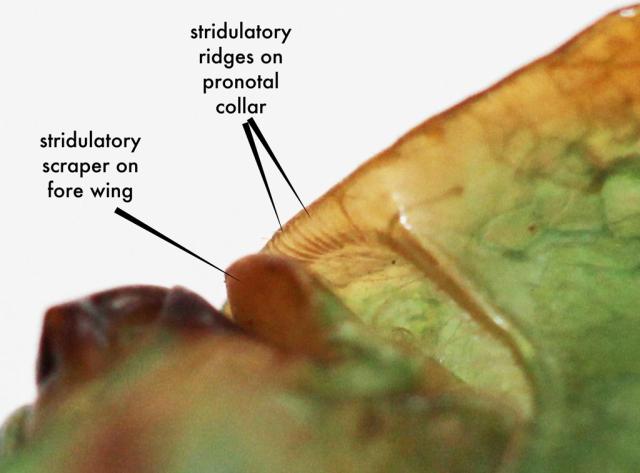
Lastly, some species like those belonging to the genus Tettigarcta vibrate the substrate (soil, plant matter, etc) they live in, rather than vibrating the air.
Y is for Yellow Monday Cicada. The Yellow Monday cicada is the yellow form of the Cyclochila australasiae (the green form is the Green Grocer). Yellow Monday Cicadas lack a turquoise pigment that normally combines with the yellow pigment to form a green color. Visit the Scribbly Gum website for a photo and more information about Yellow Mondays.
A Yellow Monday photo by Tom Katzoulopolopoulous:

More Ozzie Cicada photos have come in. Here is an incredible Blue Moon taken by David Emery (found by his daughter). The Blue Moon is the same species as the Green Grocer (Cyclochila australasiae).
